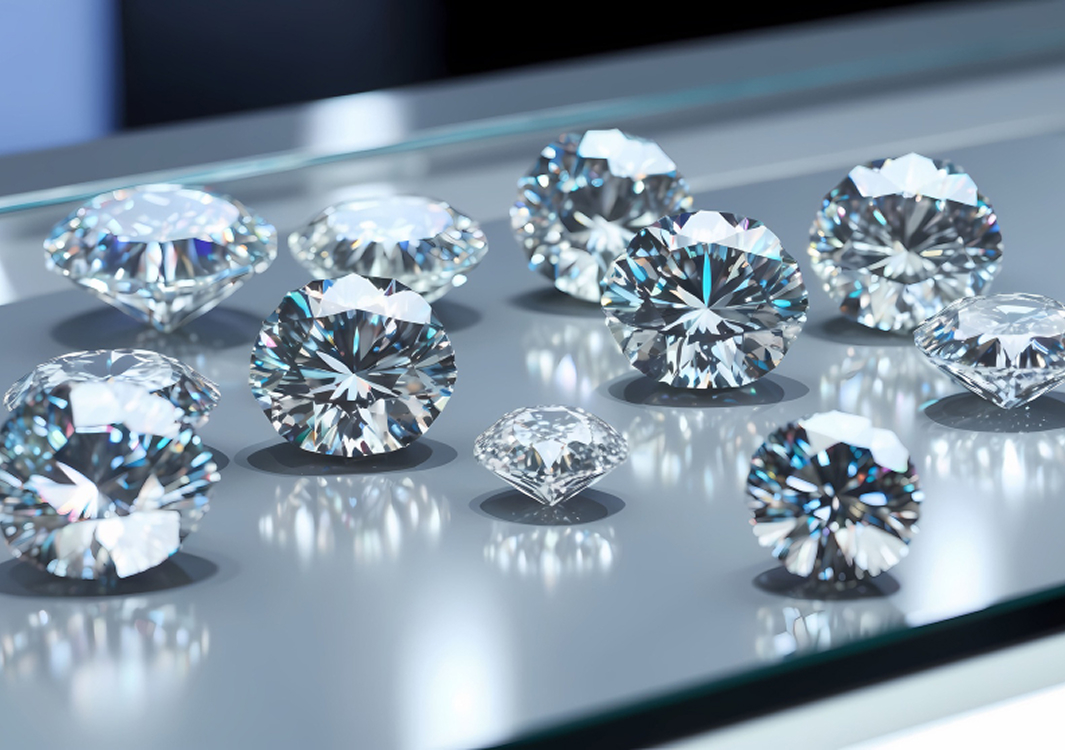
In the world of diamonds, terminology can often be confusing. Two terms frequently encountered are "lab-grown diamonds" and "artificial diamonds." While they might sound similar, these terms refer to distinct processes and products. Let's delve into the nuances to understand the differences between lab-grown diamonds and artificial diamonds. Elevate your elegance with lab grown diamond jewellery that blends ethical beauty with lasting brilliance.
Lab-grown diamonds, often referred to as synthetic or cultured diamonds, represent a groundbreaking innovation in the jewellery industry. These diamonds are meticulously created in controlled laboratory environments that replicate the natural conditions under which diamonds form deep within the Earth's crust. Despite their artificial origin, lab-grown diamonds exhibit remarkable similarities to their mined counterparts, boasting identical chemical composition, physical attributes, and optical properties. Choose from a curated range of lab grown diamond rings India, crafted for both beauty and conscious luxury.
The creation of lab-grown diamonds involves sophisticated techniques that emulate the geological processes responsible for the formation of natural diamonds. Two primary methods are employed in the cultivation of these diamonds: High Pressure High Temperature (HPHT) and Chemical Vapour Deposition (CVD).
High Pressure High Temperature (HPHT): This method simulates the intense conditions found deep within the Earth's mantle, where diamonds naturally crystallise over millions of years. In the HPHT process, a small diamond seed is subjected to high pressure and temperature, prompting carbon atoms to arrange themselves into a diamond crystal structure. This gradual growth process results in the formation of a fully developed lab-grown diamond.
Chemical Vapour Deposition (CVD): In contrast to HPHT, the CVD method involves the deposition of carbon atoms onto a substrate in a controlled environment. A hydrocarbon gas, such as methane, is introduced into a vacuum chamber, where it is ionised into carbon and hydrogen atoms. These carbon atoms then settle onto the substrate, gradually building up layers of diamond crystals over time. The CVD process allows for precise control over the diamond's growth, resulting in exceptionally pure and high-quality lab-grown diamonds. Ashth offers curated jewellery for engagement that blends modern style with meaningful tradition.
Regardless of the method used, lab-grown diamonds emerge from the process with the same crystal structure and properties as natural diamonds. They exhibit the renowned hardness, brilliance, and optical clarity that have long been associated with mined diamonds. This remarkable similarity extends to their chemical composition, with lab-grown diamonds consisting entirely of carbon atoms arranged in a crystal lattice structure, just like their naturally occurring counterparts.
Lab-grown diamonds offer several distinct advantages over mined diamonds. Not only are they indistinguishable from natural diamonds to the naked eye, but they also come with ethical and environmental benefits. By opting for lab-grown diamonds, consumers can support sustainable practices and reduce their impact on the environment, as these diamonds are produced with minimal ecological footprint compared to traditional mining methods.
Artificial diamonds, also known as simulated or imitation diamonds, offer an alternative to both natural and lab-grown diamonds. Unlike lab-grown diamonds, which are chemically identical to mined diamonds, artificial diamonds are crafted from materials other than carbon, such as cubic zirconia, moissanite, or glass. While they may share some visual similarities with real diamonds, artificial diamonds lack the unique properties and composition that define authentic diamonds.
Composition: Artificial diamonds are synthesised using materials that mimic the appearance of natural diamonds but do not possess the same chemical structure. For example, cubic zirconia (CZ) is a popular choice for artificial diamonds due to its optical clarity and brilliance, while moissanite is a naturally occurring mineral that is often used as a diamond alternative. Additionally, glass or crystal materials may also be employed to create imitation diamonds. Complete your special day with diamond bridal wedding jewellery that reflects grace, commitment, and timeless charm.
Appearance: Artificial diamonds are designed to emulate the sparkle and brilliance of real diamonds, but they may exhibit distinct optical properties upon closer inspection. While they may appear similar to natural diamonds at a glance, artificial diamonds often lack the unique dispersion and fire that are characteristic of authentic diamonds. As a result, trained gemologists can typically distinguish between artificial and genuine diamonds based on their optical characteristics.
Cost: One of the key advantages of artificial diamonds is their affordability relative to natural and lab-grown diamonds. Since they are composed of less expensive materials and can be manufactured using relatively simple processes, artificial diamonds are generally more budget-friendly options for consumers seeking diamond-like sparkle without the high price tag.
Composition: Lab-grown diamonds are composed of carbon atoms arranged in a crystal lattice structure, identical to natural diamonds, while artificial diamonds are made from different materials that mimic the appearance of diamonds. Hence, lab grown diamonds are real.
Physical Properties: Lab-grown diamonds possess the same hardness, brilliance, and optical properties as natural diamonds, whereas artificial diamonds may have different optical characteristics and durability.
Price: Lab-grown diamonds typically command a higher price than artificial diamonds due to their composition and similarity to natural diamonds. Explore Ashth’s premium collection of lab grown diamond earrings India – perfect for everyday sparkle or special occasions.
When choosing between lab-grown and artificial diamonds, it's essential to consider your preferences, budget, and desired characteristics. While lab-grown diamonds offer a sustainable and ethical alternative to mined diamonds with identical properties, artificial diamonds provide an affordable option for those seeking diamond-like aesthetics without the price tag. Each of Ashth’s diamond is grown in a lab using the CVD process to achieve sustainable brilliance. Understanding the differences between these options empowers consumers to make informed decisions that align with their values and preferences.